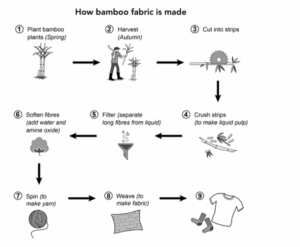The colon is mainly used to introduce a list. We also use it to explain or illustrate the sentence that comes before the colon. Think of it as a sign that replaces the following: which is, which are, and here is what I’m talking about. Read on to learn everything you need to know about this punctuation mark in detail.
Question: Should we capitalize the first word after the colon?
Answer: Never capitalize the word after a colon when it introduces a list of items.
Example:
When you go to the mall, don’t forget to buy three things: apples, a loaf of bread, and a pack of salt.
- If you are writing in the British style, you should capitalize it only if it’s a proper noun or an acronym, which are by the way always capitalized.
Examples:
- We should invite two more people to the party: Ashley and Mark.
- Bill Bryson once said, “There are three stages in scientific discovery: first, people deny that it is true. Then they deny that it is important. Finally, they credit the wrong person.”
- In the American style, it is also necessary to capitalize the proper nouns and acronyms following the colon; however, when it comes to complete sentences, The Chicago Manual of Style suggests that we should capitalize the first word only in the following cases:
- The first word after the colon is a proper noun.
- The colon introduces two or more sentences.
- The colon introduces speech in dialogue, a quotation, or a question.
Examples:
- I have only traveled to three countries: Italy, Germany, and France.
- I can only tell you one thing about her: art is her life.
- Here is what you need to do to improve your writing skills: First, you should read lots of high-quality materials. Second, you need to write on a daily basis and get it evaluated by an expert.
Note: capitalize the first word of a complete sentence if it is a quotation even if it is only one sentence.
Example:
He gave me a piece of advice: “Your life is your responsibility.”
Now that you know when to capitalize the word following the colon, it’s time to talk about the colon’s uses.
Use the colon to introduce a list.
Example:
He speaks three languages: English, Spanish, and French.
Note: When the list is part of the flow of a sentence, you should not use a colon.
Example:
Incorrect: I need to shop for: vegetables, fruits, rice, and milk.
Correct: I need to shop for vegetables, fruits, rice, and milk.
Incorrect: During the safari, the tourists only saw: a pride of lions, a herd of zebras, and some vultures.
Correct: During the safari, the tourists only saw a pride of lions, a herd of zebras, and some vultures.
You can use a colon to separate two independent clauses/complete sentences if the second sentence is an explanation or a summary for the first.
Note: In these cases, you may think of the colon as a replacement for “and here is the explanation/summary.” This usage of the colon is similar to that of the semicolon. But keep in mind that both these punctuation marks should be used sparingly; otherwise, the flow of your writing will break.
Example:
“Life is like a box of chocolate: you never know what you’re gonna get.”
-Forest Gump
Use a hyphen when you want to include bullet points in your sentence.
Depending on the type of your bulleted text, you will need to use one of the following methods:
A list of continuous sentences:
When you come to the class, make sure to:
- bring your textbook;
- arrive before the teacher enters the class; and
- be prepared for the day’s topic.
A list of short points or items:
For our camping trip, we’ll need:
- a big tent
- lots of water
- a map, and
- some food.
If you don’t want to use colons for this, you can do this:
For our camping trip, we’ll need the following items.
- a big tent
- lots of water
- a map
- some food
You can use a colon when you want to emphasize a word or a phrase at the end of a sentence.
Note: The em dash is more common in these cases.
Example:
They finally decided what they wanted to name their baby: Emma.
Use a colon after the names of the speakers in dialogue.
Example:
Julia: What time is it?
Brian: I think it’s 2:30.
Use the colon to separate units of time (hours from minutes and minutes from seconds) and ratios.
Example:
- Time: 2:15:37 expresses two hours, fifteen minutes, and thirty-seven seconds
- Ratio: The ratio of nurses to doctors is 3:1 (three to one).
Use a colon to separate the title from subtitle.
Example:
Star Wars: The Last Jedi
Note: Sometimes, the subtitles also have a colon. In such cases, change the second colon into a semicolon.
Example:
Incorrect: Retail Hell: How I Sold My Soul to the Store: Confessions of a Tortured Sales Associate by Freeman Hall
Correct: Retail Hell: How I Sold My Soul to the Store; Confessions of a Tortured Sales Associate by Freeman Hall
Use a colon after the salutation in a formal business letter even when you address them by their names.
Examples:
- To whom it may concern:
- Dear Mr. Smith:
I am writing you concerning a recent purchase…
Note: We use a comma after the salutation in less formal letters.
Use a colon to separate the volume from the page number of a work.
Example:
War and Peace 2:25-45
The book War and Peace has three volumes. In the example above, I am referring to the second volume, pages 25 to 45.
Follow us on YouTube for more tips and resources.








